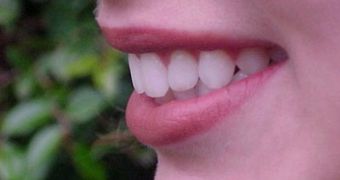As opposed to sharks, for example, mammals usually grow their teeth in single rows, one in the upper part of the mouth, and the other directly beneath. This allows them to bite and rip apart meat or other harder foods. But geneticists and other researchers have wondered for a long time about what tells the human body to only grow two rows of teeth. Now, a paper published in the latest issue of the journal Science comes to shed some light on that.
According to the new study, a system of genetic factors, opposed to each other, is the main reason why people grow their teeth the way they do. Furthermore, what's even greater about the new research is that it provides hope that doctors will be able to manipulate an infant's genes one day in such a way that he or she will be born without such conditions as missing teeth, a cleft palate or having their teeth grow outside the normal row. All that researchers need to do before this becomes a reality is to fully understand how information is passed on from genes to the proteins that do all the work, in a process known as “gene expression.”
Another interesting find of the new study was that if researchers inhibited a specific gene in mice, then the next generation of animals would be born with extra teeth that appeared both in front and behind the normal ones. Although it may not seem like much because it was done on other animals, the investigation holds the same promise for humans as well, as the mechanisms that regulate the gene expression in both species are very much alike.
“This finding was exciting because extra teeth developed from tissue that normally does not give rise to teeth. It takes the concerted actions of hundreds of genes to build a tooth, so it was amazing to find that deleting one gene caused the activation of a complete tooth developmental program outside of the normal tooth row in those mice. Finding out how the extra teeth developed will reveal how nature makes a tooth from scratch, which will guide tooth regeneration research,” the corresponding author of the paper, Rulang Jiang, Ph.D, who is a Center for Oral Biology Biomedical Genetics associate professor at the University of Rochester's Medical Center, explains.
“Beyond medical applications, our results suggest that diversity in the number of tooth rows across species may be due to evolutionary changes in the control of the BMP4/Msx1 pathway. In mammals, Osr2 suppresses this pathway to restrict teeth within a single row,” he concludes.

 14 DAY TRIAL //
14 DAY TRIAL //